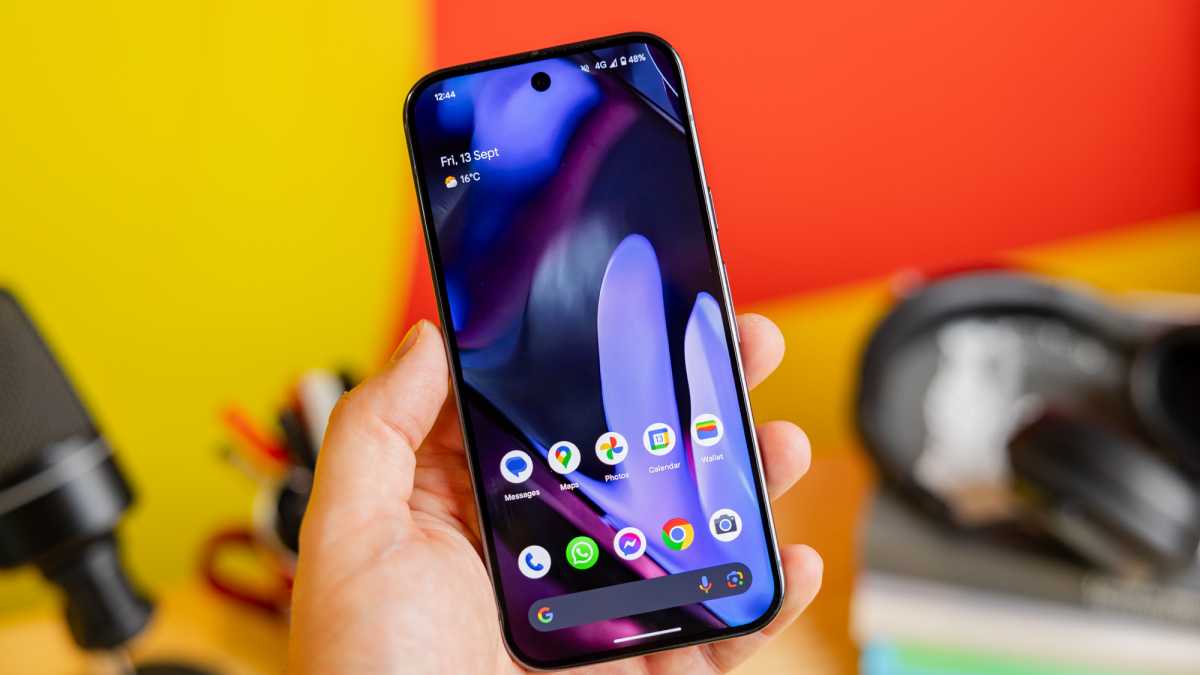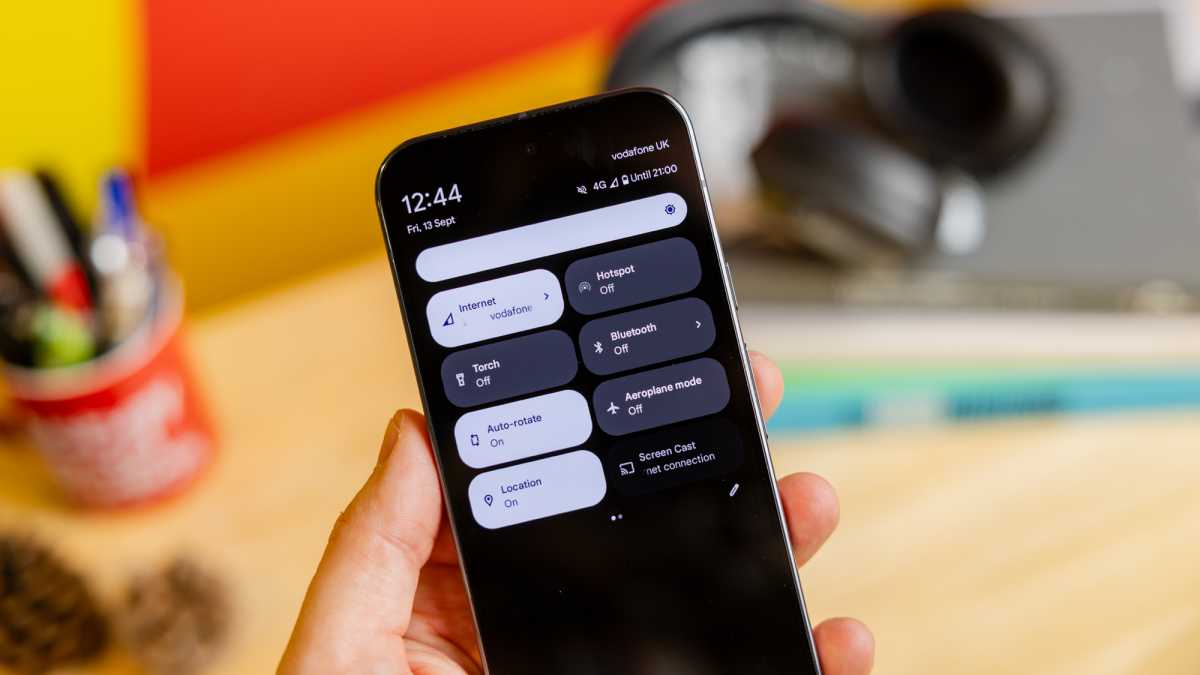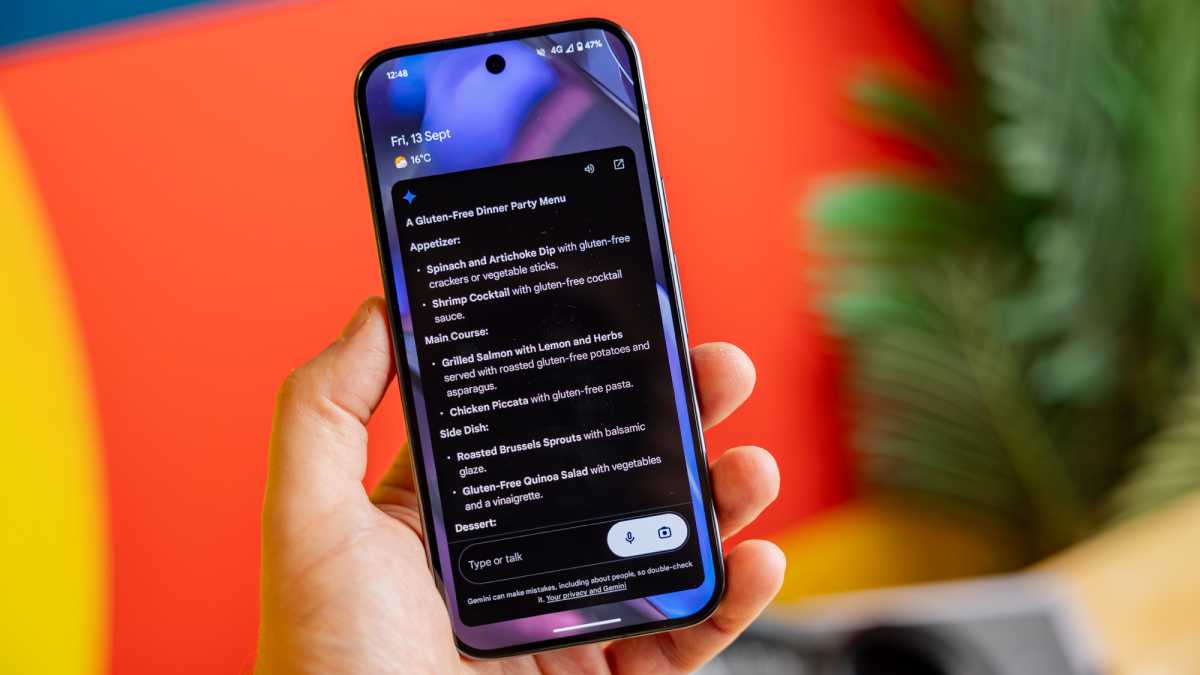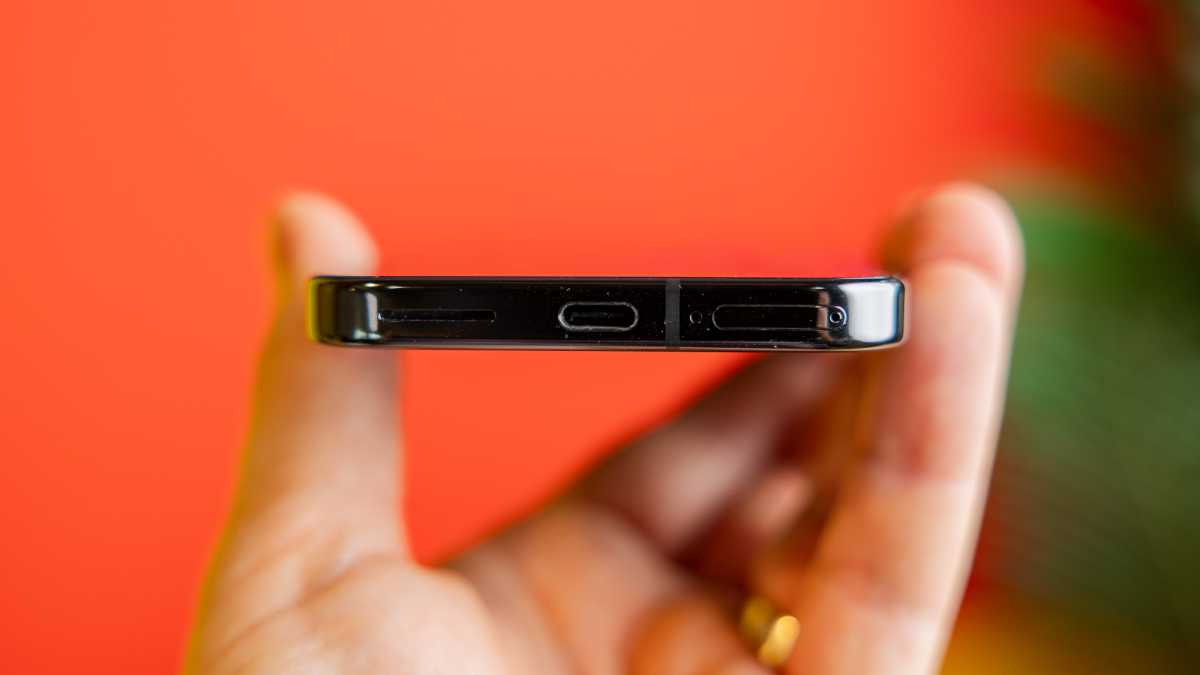The Pixel 10 series is still a while away, but there’s already a lot of buzz surrounding what will make this next-gen device stand out from its predecessors.
With rumours of a brand-new Tensor G5 chip and improved biometric features, anticipation is building for what could be Google’s most advanced Pixel yet. Especially as the Pixel 9 series has not quite lived up to users’ expectations and our thoughts on the Pixel 9 are rather mixed.
Here’s everything we know so far about the upcoming Pixel 10 series.
When will the Google Pixel 10 be released?
At this early stage, there’s no official release date for the Pixel 10 phones, of course.
However, codenames of the series have been leaked (via the reliable Android Headlines), revealing four models: Pixel 10 (‘Frankel’), Pixel 10 Pro (‘Blazer’), Pixel 10 Pro XL (‘Mustang’), and Pixel 10 Pro Fold (‘Rango’). These names reference different horse breeds.
Model numbers have also emerged, further confirming this lineup. According to Android Headlines, the Pixel 10 will use GLBW0 and GL066, the Pixel 10 Pro will use G4QUR and GN4F5, the Pixel 10 Pro XL will use GUL82, and the Pixel 10 Pro Fold will use GU0NP.
These leaks suggest that the Pixel 10 lineup will maintain the variety of models seen in the Pixel 9 series, including a continuation of the Pixel 10 Pro model as a compact premium option.
Dominik Tomaszewski / Foundry
Over the years, Google has had a pretty regular routine when it comes to its hardware launches. Recently, however, its schedule changed with the release of the Pixel 9 series.
Here’s when the previous core (non ‘a’) models were launched:
- Google Pixel 9 series: August 2024
- Google Pixel 8 series: October 2023
- Google Pixel 7 series: October 2022
- Google Pixel 6 series: October 2021
There’s a chance that the Pixel 10 series will follow this year’s models and make its debut in August 2025. However, Google might return to its regular schedule and debut the Pixel 10 series in October 2025 instead.
Android Headlines reports that an August 25th launch is being planned – a touch later than the Pixel 9 reveal, but still well ahead of Google’s traditional October launch window.
How much will the Google Pixel 10 cost?
As a reminder, here are the launch prices of the Pixel 9 series:
- Google Pixel 9: £799/$799
- Google Pixel 9 Pro: £999/$999
- Google Pixel 9 Pro XL: £1,099/$1,099
- Google Pixel 9 Pro Fold: £1,749/$1,799
The regular Pixel 9 is £100/$100 more expensive than the Pixel 8. The Pixel 9 Pro, on the other hand, is priced the same as the Pixel 8 Pro, likely so that the Pixel 9 Pro XL can be introduced at £100/$100 more.
Lastly, the Pixel 9 Pro Fold is priced at £1,749/$1,799, the same as the original Pixel Fold.
After a couple of price rises, we hope the Pixel 10 series will be priced the same as the previous series.
What specs and features will the Google Pixel 10 have?
Design
The design of the Pixel 10 series is still a topic of speculation, but it’s expected that Google may continue to use the new flatter, more industrial look introduced with the Pixel 9 series.
While the flatter edges may be less ergonomic than previous models, it’s possible that Google could opt for a more balanced approach in the Pixel 10 series; merging the sleek flat sides with more comfortable curves.
CAD-based renders published by the reputable OnLeaks and Android Headlines suggest that Google is sticking with the “pill” style camera visor design from the Pixel 9, though there are a few subtle changes.

OnLeaks x Android Headlines
For instance, the Pixel 10 will reportedly have a 6.3in display and measure 152.8 x 72.0 x 8.6mm – 0.1mm thicker than its predecessor. This might simply be down to slightly thicker back glass rather than anything major.
The most noticeable change? A third camera lens on the back of the Pixel 10, suggesting that Google might be adding a telephoto lens or some other feature even to the standard model. However, the thermometer sensor appears to remain exclusive to the Pro models.
The Pixel 10 Pro is the same size as the base model, though the Pro’s frame is said to be glossy while the standard Pixel 10 keeps a matt finish – a visual cue harking back to the 9 series.

OnLeaks x Android Headlines
As for the Pixel 10 Pro XL, it’s expected to have a 6.8in display and dimensions of 162.7 x 76.6 x 8.5mm, making it ever so slightly shorter than the Pixel 9 Pro XL.
CAD renders for the Pixel 10 Pro Fold have also emerged, courtesy of a detailed video published by Android Headlines on YouTube. The foldable appears to maintain a very similar design to the Pixel 9 Pro Fold, though the new model is reported to be slightly thicker when unfolded – 5.3mm compared to 5.1mm. Its full unfolded dimensions are reportedly 155.2 x 150.4 x 5.3mm, though these may still change before launch.
Display
Google is likely to push the limits of display technology with the Pixel 10 series.
While the 3000 nits brightness of the Pixel 9 is already impressive, the Pixel 10 might go even further; enhancing outdoor visibility and performance under direct sunlight. Also expect adaptive refresh rates from 60- to 120Hz to continue, ensuring smooth scrolling while conserving battery life when full performance isn’t needed.
Resolution may still differ across the lineup. Expect the base Pixel 10 to feature a 1080p+ screen, while the Pro models retain higher-resolution 1280p+ panels.

Dominik Tomaszewski / Foundry
One area in which improvement is highly anticipated is PWM dimming (Pulse Width Modulation), which affects display flicker and can lead to eye strain for some users.
Currently, Google’s display technology flickers at a low 240Hz, which is half the rate of the Galaxy S24 series and the iPhone 15 series. With competitors like the OnePlus 12’s 2160Hz PWM rate, it’s expected that the Pixel 10 series will adopt a more eye-friendly approach. This would make it more comfortable for long-term use, especially in low-light settings.
Additionally, wet touch functionality – first introduced with the Pixel 9 series – should continue to improve, allowing users to interact with their phones, even when the display is wet, enhancing the overall user experience.
Performance
The most significant performance leap for the Pixel 10 series will come from the introduction of the company’s own Tensor G5 chip.
According to a report from Business Korea, Google may be ditching Samsung and heading to TSMC to manufacture its own chipsets. This means that the Tensor G5 might be Google’s first fully in-house design built on TSMC’s 3nm process. This has been corroborated in a detailed breakdown by Android Authority.

Dominik Tomaszewski / Foundry
The G5 will still use Arm Cortex CPU cores, but will replace the Mali GPU with an Imagination Technologies DXT unit – reportedly the DXT-48-1536, capable of advanced graphics features like ray tracing, as noted by a RISC-V Day Tokyo conference blog post shared by Imagination Technologies to Android Authority.
Also on board is a fully custom image signal processor (ISP), the first of its kind in a Pixel chip, promising improved photography performance. Google is also including a custom memory controller, system-level cache and power modules, and switching to Chips&Media’s WAVE677DV video codec in place of Samsung’s MFC and Google’s BigWave.
What’s more, a report from China Times claims that the Tensor G5 chipset has entered the “taped-out” stage, which means the final version of the chip has been completed, and that it’s ready to enter the manufacturing stage.
This chip is expected to address the performance and heat management issues that plagued earlier Tensor chips, thanks to TSMC’s superior manufacturing process. The G5 is also expected to be significantly more efficient, enabling faster processing without overheating during tasks like gaming, video recording, or multitasking. However, it likely won’t match the Snapdragon 8 Gen 3 or upcoming 8 Gen 4 in raw performance.
Android Authority also reports that Google is testing its upcoming Pixel 10 prototypes with a MediaTek modem, specifically the as-yet-unannounced T900 model.
This marks a potential shift from Samsung Exynos modems, which have been used in recent Pixel devices due to their integration with Google’s Tensors, which are customised versions of Samsung chipsets.
Details about the MediaTek T900 modem remain unknown, making it difficult to predict its performance or how it might stack up against Qualcomm’s offerings.
Speculation has arisen that Google might have chosen MediaTek due to potentially lower costs, a characteristic often attributed to MediaTek’s flagship chipsets.
However, the actual reasoning and implications of this choice will become clearer over time.

Dominik Tomaszewski / Foundry
Other third-party components are expected for USB, PCIe, I3C, DisplayPort, and flash storage interfaces.
It’s likely to be paired with 12GB of RAM and 128- or 256GB of storage on the regular Pixel 9. On the other hand, the Pixel 9 Pro, 9 Pro XL and 9 Pro Fold might be paired with 16GB of RAM, and up to 1TB of storage.

Dominik Tomaszewski / Foundry
In terms of AI and machine learning, Google’s Tensor processors have already set themselves apart by excelling in these areas, and the Tensor G5 will likely push those capabilities even further.
For AI, on-device Gemini Nano will return. Expect on-device Gemini AI tasks such as voice recognition, image processing, and real-time language translation to become faster and more accurate.
Mishaal Rahman from Android Authority spotted AOSP code confirming that Pixel 10 will support ‘parallel module loading’, resulting in a 30% reduction in early-stage loading times during boot up.
Paired with Google’s optimisations for Android 16, the Pixel 10 could become a more viable option for mobile gamers looking for smooth, high-performance experiences.
Cameras
Google’s Pixel phones have always been known for their stellar camera performance, especially in terms of computational photography. And with the custom ISP in Tensor G5, things are about to get even better.
That said, Android Authority has revealed that camera hardware across the Pixel 10 range is receiving significant changes – though not necessarily improvements.
Starting with the Pixel 10, it will indeed feature a telephoto lens, confirmed as an 11Mp Samsung 3J1 – the same one found in the Pixel 9 Pro Fold. However, that comes at a cost.
The main sensor is being downgraded from the 50Mp Samsung GNV to the smaller 50Mp Samsung GN8, while the ultrawide is shifting from a 48Mp Sony IMX858 to a 13Mp Sony IMX712. These same sensors were previously used in the Pixel 9a.
The selfie camera is also changing, from a 13Mp IMX712 to the same 11Mp Samsung 3J1. While Google could use advanced AI and ISP processing to improve results, the smaller sensors may lead to worse low-light performance and reduced image detail.
The Pixel 10 Pro and Pixel 10 Pro XL, by contrast, will reportedly stick with the same camera hardware as last year: a 50Mp Samsung GNV primary sensor and a 48Mp Sony IMX858 for ultrawide, telephoto, and front-facing duties. However, the new Tensor G5 ISP might help squeeze more out of the existing setup.
Meanwhile, the Pixel 10 Pro Fold will receive a minor update, with the main 64Mp Sony IMX787 from the Pixel 9 Pro Fold replaced by the 50Mp Samsung GN8, again used in the Pixel 9a. Aside from this primary lens change, the rest of the camera configuration remains untouched.
These changes indicate a broader strategy from Google: differentiating the base model more clearly from the Pro devices. But with the base Pixel 10 effectively using Pixel 9a-grade hardware plus a telephoto, it might be a tough sell at around £800/$800 unless software advancements deliver meaningful gains.
The Pixel 10 series will also likely continue to focus on AI-driven improvements rather than just these hardware upgrades.
New features could include improvements to Night Sight, Astrophotography, and Portrait Mode, using AI to further enhance image quality, even in challenging lighting conditions.
Additionally, Google could enhance Video Boost, which debuted in the Pixel 8 series, to provide even better video stabilisation and clarity, making the Pixel 10 a go-to device for mobile videographers.

Dominik Tomaszewski / Foundry
Another area of improvement might be in Zoom Enhance, which uses AI to maintain image clarity at higher zoom levels without needing massive physical camera sensors.
With Google’s increasing emphasis on AI image processing, it’s likely that the Pixel 10 will take this even further, allowing for higher-quality zoomed-in shots without adding bulk to the camera system.
Lastly, we can expect AI-driven features like ‘Add Me’ and ‘Reimagine’ – which debuted on the Pixel 9 series – to evolve, giving users more creative tools to edit and perfect their photos.

Dominik Tomaszewski / Foundry
The recent leak from Google’s gChips division (via Android Authority) has shed more light on advanced AI and camera features.
With the Pixel 10, powered by the Tensor G5, users can expect 4K HDR video recording at 60fps, a substantial upgrade from the 30fps limit on the Pixel 9, bringing Google’s devices closer to the capabilities of its competitors.
The G5 may also introduce AI-powered video editing features, including ‘Generative AI-based Intuitive Video Editing’ in Google Photos, which could function as a ‘Magic Editor’ for videos.
Additional editing tools, such as ‘Speak-to-Tweak’ for voice-controlled adjustments and ‘Sketch-to-Image’ for turning sketches into photos, aim to simplify and enhance the editing experience.
Moreover, the Tensor G5 might allow on-device processing for Stable Diffusion models, which should boost generative editing capabilities without needing cloud support.
Battery & Charging
Battery longevity is always a concern with high-performance smartphones, and the Pixel line has seen mixed results in this area. With the new Tensor G5 chip built on TSMC’s 3nm process, we expect better battery efficiency, which could translate to longer-lasting usage, even under heavy loads.
In terms of charging, while fast wired charging is likely to remain in the 30W to 35W range, Google may improve the phone’s wireless charging abilities. The inclusion of reverse wireless charging could also be more efficient, allowing the Pixel 10 series to charge other devices such as earbuds or smartwatches quickly.

Dominik Tomaszewski / Foundry
Software
The Google Pixel 10 series is very likely to launch with Android 16, depending on whether Google introduces the phones in August or October.
A brand-new feature called Pixel Sense is expected to debut alongside the phones. As reported by Android Authority, this is a rebrand of the rumoured “Pixie” assistant. Pixel Sense is designed to offer personalised, on-device assistance using contextual data from a wide range of Google apps and services – including Gmail, Calendar, Chrome, Keep, and even screenshots.
Pixel Sense will run fully on-device, preserving user privacy and allowing it to function offline. It promises to offer predictive suggestions, speed up daily routines, and adapt to your evolving interests using Gemini Nano-powered AI.
This is all we currently know about the Pixel 10 series. In the meantime, check out our lists of the best Android phones and the best upcoming phones in 2024.


